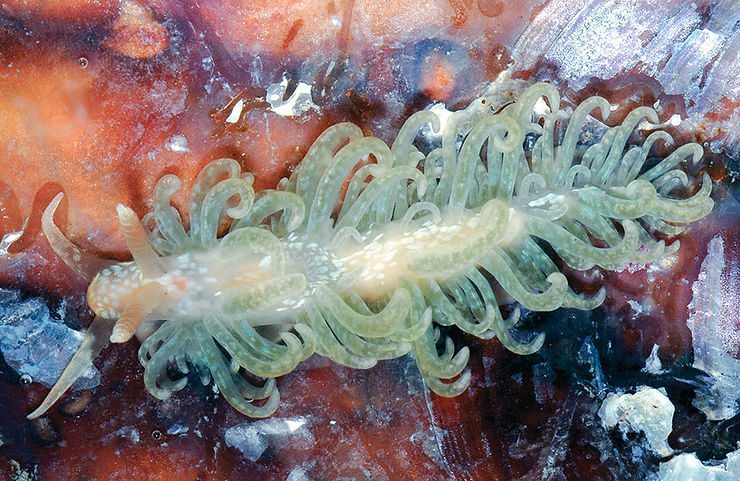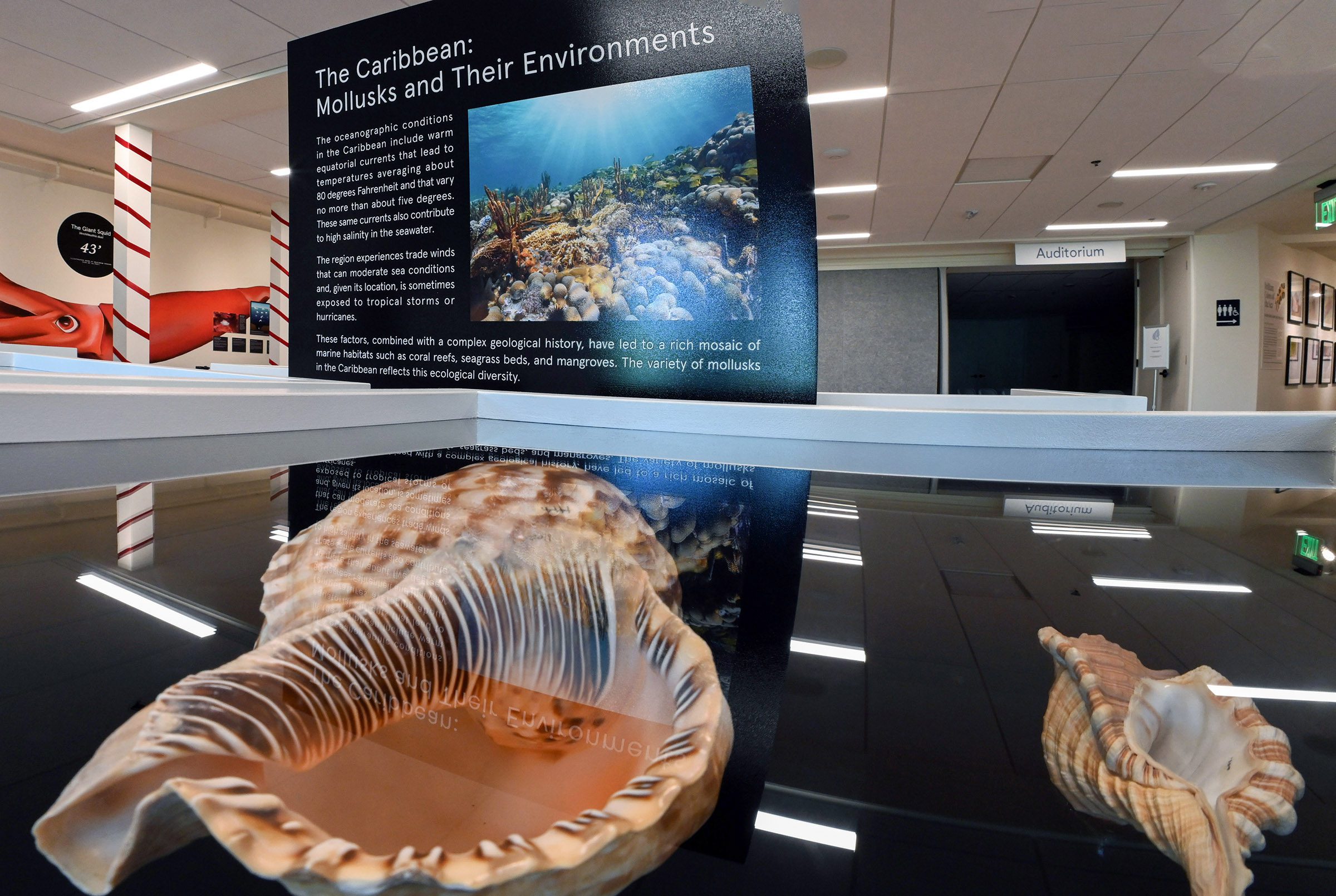Spurilla braziliana MacFarland, 1909, is a relatively large, shell-less sea slug that reaches about 80 mm (about 3 inches). The curly projections on the “back” of the slug are known as cerata; each ceratum includes an extension of the animal’s digestive gland. The Brazilian Spurilla feeds on sea-anemones, and may assimilate cnidocytes (stinging cells) the from sea-anemones it feeds into its own body to use as a defensive mechanism. Its color is variable, covering light-pink, orange, green, light greenish-brown, and the cerata can be gray to brown. Its egg mass resembles thin noodles. The species is widely distributed in the tropical western Atlantic Ocean. (Species formerly identified as Spurilla neapolitana (delle Chiaje, 1844). This latter, however, is restricted to the eastern Atlantic and Mediterranean Sea.)
 The Brazilian Spurilla, Spurilla braziliana. Photo by Ángel Valdés.
The Brazilian Spurilla, Spurilla braziliana. Photo by Ángel Valdés.
#brazilianspurilla #spurillabraziliana #spurillaneapolitana #aeolididae #cerata #cnidocytes #stingingcells


